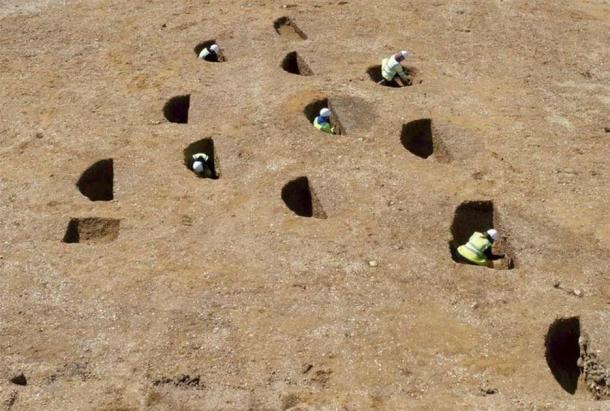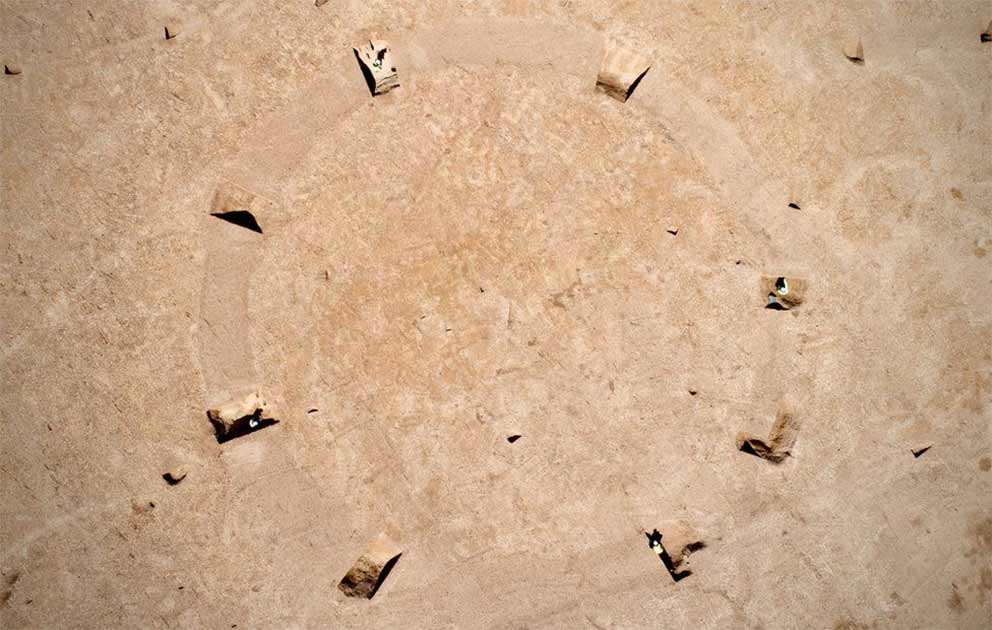Sacred Farming: Huge Monument Find Showcases Neolithic Earth Worship
Archaeologists excavating near the village of Biddenham in Bedfordshire, England, have uncovered several ancient structures dating back 6,000 years. But most recently, a huge ritualistic monument has emerged from the timeworn fields.
The team have uncovered several layers of archaeology dating back to the Neolithic. Bronze Age, Iron Age and Saxon period artifacts have also been discovered by the archaeologists from Albion Archaeology, working with excavators from RPS Consulting Services.
At first, this was assumed to be a stand-alone farming settlement. But now, with a vast ceremonial monument having been discovered, it is suspected this site served ancient cultures as a “sacred” agricultural center where fertility rites were most probably practiced for thousands of years.
Farming In The Shadow Of The Gods
Iain Leslie from Albion Archaeology told the BBC that the researchers also discovered evidence of “an Iron Age settlement.” This post-Neolithic phase of use included at least “one roundhouse and several storage pits.”

Iron Age pits found at the site (BBC / Albion Archaeology)
Saving seed grain and preserving it over winter for sowing in the spring was perhaps the number one vulnerability in ancient agriculture-based cultures. Thus, the entire process of growing, harvesting and saving wheat seeds was deeply ritualized. For without the blessing of the gods, rats, mold and frosts might destroy one’s grain stories, bringing about local and regional disaster.
- Did Neolithic Dairy Farmers Try To Butter Up The Gods?
- From Hunters to Settlers: How the Neolithic Revolution Changed the World
Leslie said that among the most unexpected discoveries was the presence of relatively extensive Anglo-Saxon remains including: “a sunken-featured building and several contemporary structures, in addition to an oven for baking bread or drying grain.” These features all represent advancements from the Iron Age, which in turn came from the Neolithic period.
However, what didn’t change much over the almost 5,000 years of occupation was the dependence on the massive ceremonial circle at this site.

An ancient oven is evidence of settlement at the site. (BBC / Albion Archaeology)
An Open-Air Agri-Temple?
The site was occupied from around 6,000 years ago, in the Neolithic/early Bronze Age, and remained so through the Iron Age and into Anglo-Saxon times. Therefore, the researchers think the site greatly broadens the understanding of “how" the surrounding landscape was used and lived in during this period of time.
But the archaeologists are working against the clock. Planning consent was given to construction company, Dandara, for a new building at the site. The consent was given with a condition that an archaeological dig was to take place, “with the findings recorded before construction could start,” according to Heritage Daily.
Chris Higgins from Dandara said it is great to have an advanced understanding of such key periods of history, adding “this is a unique opportunity to appreciate the historical importance of the site.” What then might have occurred at this site when it was operating as a temple?
The word “temple” is chosen carefully, for while you might associate the term with sacred buildings this was not always what the word represented. The word comes from the Latin templum, “consecrated piece of ground,” only later becoming “a building” for the worship of a god.
Sacred Rites Of Farming
The cults, rituals, rites and magic of early farming communities emerged in the Early Holocene period between 8,000 – 3,000 BC. Unlike the Paleolithic and Mesolithic periods of prehistory the Neolithic period “was characterized by climatic conditions, very similar to those of the present, that directed human activity chiefly to the soil and its fruits.”
- Largest Neolithic Circle Ever Discovered In Britain
- Outside the Circle: The Ancient Stonehenge Landscape – A Wider Perspective
Having emerged from hundreds of thousands of years of stone tool production while inhabiting caves, for the longest time humans most probably ritualized, maybe even worshiped, stones and their associated spirits or deities. But in the Neolithic period humans shifted their supernatural focus to the Earth and “her” ability to produce life-sustaining crops.

The Neolithic Revolution marked a shift from nomadic hunter-gatherers to permanent agricultural settlements, such as here at Skara Brae (shorty25 / Adobe Stock)
With agriculture came a more settled lifestyle. Sites of permanent occupation were built in the most abundant flat landscapes. The process of domesticating seeds, plants and animals brought about pottery making, dairy farming and advancements in salt and smoke preservation methods.
Collectively, this is referred to as the “Neolithic Revolution” and the site at Biddenham represents this new shift in thinking. Here, the old deities who were perceived as governing the elements that most affected successful crop production were worshiped.
And in this case the ever-changing systems of worship seemed to work, because the farming site and ceremonial center was occupied from the Neolithic right through to the Anglo Saxon period.
Top image: The ceremonial circle was found at an agricultural site occupied for thousands of years. Source: BBC / Albion Archaeology
By Ashley Cowie



















